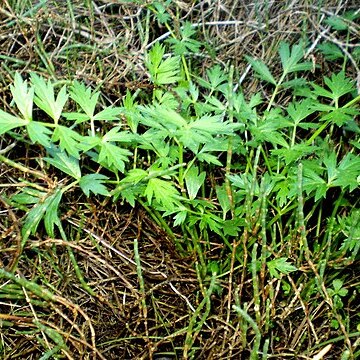Procumbent to ascending, terrestrial perennial, not rooting at nodes. Lvs pinnately 3-foliolate to 1-2-pinnate; ultimate segments broadly or narrowly ovate to deltate, usually lobed and crenate, c. 5-30 mm long; upper stem lvs similar to lower and basal lvs, but often reduced and 3-foliolate or simple. Umbels compound, usually sessile or subsessile, lf-opposed; rays 2-10-(15); bracts and bracteoles 0. Fls numerous, white. Fr. broadly ovoid, 1.5-2.5 mm long; ribs broad and spongy.
Pending.

